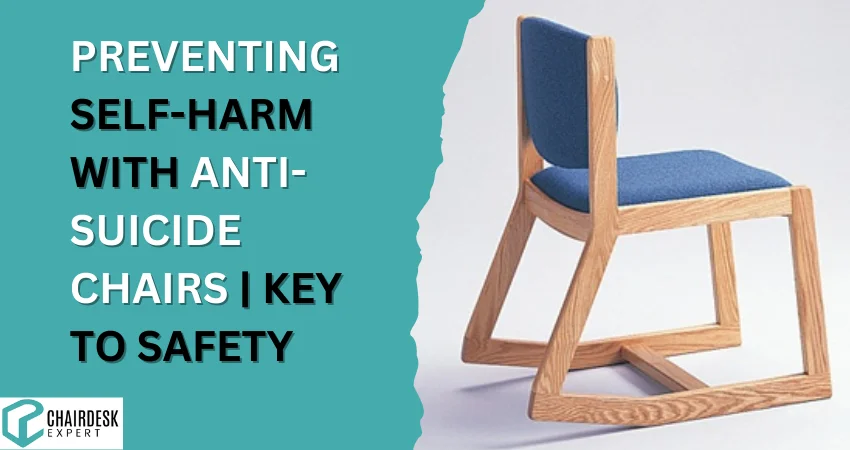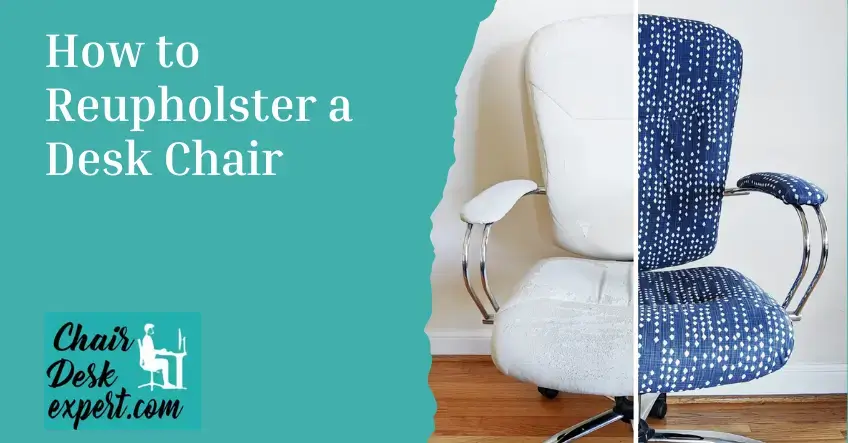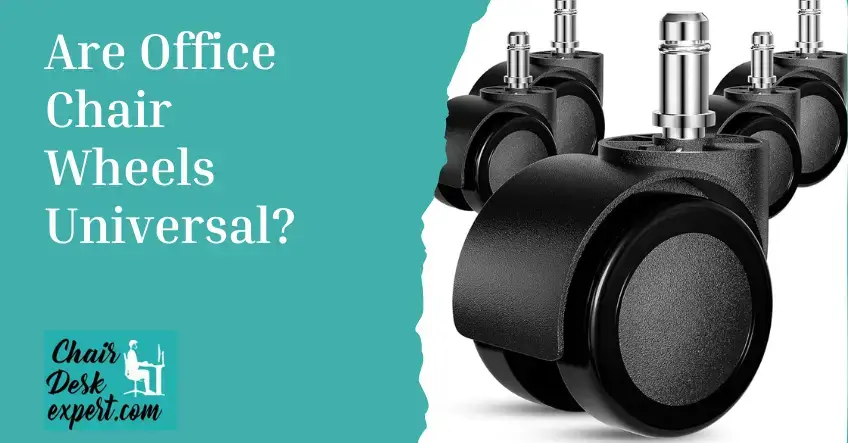How can we stop people from self-harm with a psychiatric emergency with anti-suicide chairs? Young people, especially college students, have been at high risk in recent eras.
But every problem has a solution. Anti suicide chairs, as the name indicates, are the chairs that make places safe and help people when they are in trouble.
This guide will help you understand suicide chairs in simple terms. , how they work. We will discuss the importance of antisuicide chairs, including how ant-suicide chairs play a role in decreasing the suicide rate.
Antisuicide Chairs: A Tool for Suicide Prevention
Antisuicide chairs are specially designed to discourage suicide attempts in public places. These chairs differ from regular ones as they lack rounded or hard edges and may incorporate built-in safety features like breakaway tabletops or tamper-proof screws.
However, it’s essential to recognize that even with these features, determined individuals may still find ways to harm themselves. While antisuicide chairs cannot guarantee reduced suicide rates, they can provide additional support for those struggling with suicidal thoughts.
Initially, the purpose behind antisuicide chairs was to prevent self-harm until individuals received appropriate treatment.
This concept has stirred controversy, with debates about the chairs being too costly and contentious for public use. Despite the controversy, there have been occasional reports of their implementation.
While the battle against suicide prevention may seem relentless, some studies suggest that these devices can be beneficial.
Researchers from the University of Denver in Colorado have explored the concept of creativity, the process through which suicidal thoughts occur. Accelerated ideation may indicate an increased risk of suicide.
The reasons behind suicidal attempts are complex, ranging from undiagnosed mental illnesses to difficulties balancing academics and relationships.
A survey revealed that one in four college students reported having suicidal thoughts or attempting suicide, and 15.6% faced the death of a family member. Despite the challenges and controversies surrounding antisuicide chairs, they represent one avenue in the multifaceted effort to address and prevent suicide.
The statistics and case studies emphasize the need for such measures without any delay. With nearly every year about 1100 cases of suicide occurring on campuses and the suicide rate coming only after some of the major causes of death for American teenagers and college students, action is required as soon as possible. It is not only likely to suggest such chairs and similar measures; it is imperative for the safeguarding of young people and creating a safe environment.
Difference Between a Traditional Chair & Antisuicide Chair

| Feature | Anti-Suicide Chair | Traditional Chair |
| Design | Purpose-built to prevent self-harm, typically with weighted bases, unremovable parts, and no ligature points. | Designed for comfort and aesthetics, with varying styles and materials. |
| Function | Primarily intended to prevent suicide and self-harm. | Intended for seating and relaxation. |
| Materials | Often made from sturdy, durable materials to resist manipulation. | Can be made from a variety of materials, including wood, metal, and fabric. |
| Safety Features | Specifically designed to eliminate potential hazards, such as ligature points. | May have safety features like padding or non-slip feet, but not primarily focused on preventing self-harm. |
| Mental Health Benefits | Can create a supportive and inclusive environment, reducing stigma and encouraging open dialogue about mental health. | May provide comfort and relaxation, but not specifically designed to address mental health concerns. |
| Cost | Typically more expensive due to specialized design and materials. | Can vary widely in price depending on style, materials, and brand. |
How Do Anti Suicide Prevention Chair Works?

The World Health Organization reports that suicide claims nearly 703000 lives globally every year; at the current rate, every 40 seconds, an individual dies due to suicide. Most of these people, almost 90%, have a psychiatric disorder, with mood disorders being the most common.
Antisuicide chairs are meticulously designed to deter self-harm attempts and promote a secure environment. The mechanics of these chairs involve several key features:
1-Immovable Components:
Antisuicide chairs are constructed with parts that cannot be easily disassembled. Seats, cushions, and armrests are securely fixed, preventing individuals from using chair components as tools for self-harm.
2-Reinforced Materials:
These chairs are made from durable and robust materials such as metal or concrete. The Strength of these materials not only ensures the chair’s longevity but also makes it difficult for individuals to cause harm to themselves using the chair.
3-Curved or Sloped Surfaces:
Many antisuicide chairs incorporate curved or sloped surfaces. These design elements make it challenging for someone to maintain balance or attempt self-harm while seated. The intentional shaping of the chair acts as a physical deterrent.
Read more : Ergonomic Office Chair For Sciatica
Safe Haven: Antisuicide Chairs in Dorms
Antisuicide chairs in dorms offer a safe and calming space. Their design prioritizes comfort and prevention. These chairs reduce stress and eliminate ligature points, providing a haven for students. Their integration into college dorms reflects a growing awareness of student mental health and a commitment to creating safer learning environments.
A Shield Against Self-Harm: Suicide-Proof Chairs
Suicide-proof chairs act as a physical deterrent against self-harm. Their robust construction and innovative designs make them resistant to manipulation, preventing them from being used as tools for self-destruction. Features such as weighted bases and unremovable parts eliminate potential hazards, creating a safer and more secure environment for individuals.
More Than a Seat: Antisuicide Chairs as Mental Health Catalysts
Antisuicide chairs serve as visual symbols of an institution’s commitment to mental health. Their presence can spark conversations about well-being and reduce the stigma surrounding mental health issues. By creating a supportive environment, these chairs encourage students to seek help and engage in open dialogue.
Read More : Why are School Chairs So Uncomfortable- A Detailed Guide
Beyond their preventative role, antisuicide chairs also promote general well-being. Their comfortable design and ergonomic features make them suitable for daily use, providing a relaxing space to reduce anxiety and improve mood. This aligns with the theme of action hope adopted for the World Suicide Prevention Day of 2021-2023.
Restraint chairs are used to prevent people from harming themselves during a psychiatric emergency.
These chairs prevent people from harming themselves when they are in a psychiatric emergency. The primary purpose is to restrict people from harming themselves; its restraint system also helps others stop hurting themselves.
An antisuicide chair prevents people from harming themselves by hanging. It is usually made from metal or a solid material. Chairs are padded and have a footrest to avoid self-harm.
Visible and accessible

Antisuicide chairs stop a person from self-harming. These chairs are kept in high-traffic areas. Sturdy materials make the chairs, like metal frames and padded seats and backrests. These chairs contain straps that a person cannot remove without assistance.
They provide ergonomic support. These chairs also contain salt solution resistance. Antisuicide chairs are made from heavy gauge materials that are UV and chemical-resistant.
They also contain ergonomic contours for comfortable support. These suicide chairs are also chemically and salt solution-resistant.
They are made of premium material that is both durable and comfortable. They also feature a molded-in access port and non-removable steel-encased nylon guides. These chairs are available in both single and ganged versions.
The Origin of Antisuicide Chair and Its Functionality
Originating from Japan, the term “takanohara” translates to “to be high and dry.” Antisuicide chairs are constructed from solid materials like metal or concrete, ensuring durability and discouraging self-harm. Despite their smaller size, they offer comfort akin to rocking chairs, promoting relaxation and improved blood circulation.
Applications and Profound Significance of Antisuicide Chairs
These chairs find applications in mental hospitals, holding cells, college dorms, and campuses. Placing them in high-risk locations like bridges aims to deter self-harm attempts, encouraging those in crisis to seek help instead.
The Enigma of Rocking Chairs in Dorm Rooms
Rocking chairs in university dorms serve not only as tools for suicide prevention but also as elements promoting student well-being. Their comforting and mood-enhancing features contribute to stress reduction and relaxation.
Beyond emergencies, these chairs offer comfortable seating for everyday use, contributing to a more relaxed and supportive college environment.
The Importance of Antisuicide Chairs

Antisuicide chairs serve a critical role in specific settings, particularly those where the risk of self-harm is heightened, such as college dorms or mental health facilities.
The need arises from the imperative to create environments prioritizing the Safety and well-being of individuals experiencing heightened emotional distress. These chairs act as preventative measures in spaces where vulnerable individuals may contemplate self-harm.
The preventive nature of antisuicide chairs lies in their meticulously designed features. Immovable components, reinforced materials, and curved surfaces make it challenging for individuals to use these chairs as tools for self-harm.
These chairs reduce impulsive actions and promote an atmosphere of support for individuals in crisis by creating a secure and comfortable seating option.
The Impactful Role of Antisuicide Chairs in Suicide Prevention:
1-Reducing Incidents:
By making self-harm more challenging, these chairs contribute to a decrease in suicide attempts in college dorms.
2-Fostering Open Conversations:
Having antisuicide chairs prompts discussions about mental health, encouraging individuals to seek help during tough times.
3-Promoting Overall Well-Being:
Beyond emergencies, these chairs offer comfortable seating for everyday use, contributing to a more relaxed and supportive college environment.
Read More : How To Sit Properly In a Chair To Avoid Back Pain!
Safety Features of Antisuicide Chairs that Make Them Effective:

1-Preventing Disassembly:
By having immovable components, antisuicide chairs eliminate the possibility of individuals disassembling the chair to use its parts for self-harm. This feature adds an extra layer of security.
2-Durability and Strength:
The use of reinforced materials enhances the chair’s durability and Strength. This contributes to the chair’s longevity and ensures that it cannot be easily damaged or manipulated for harmful purposes.
3-Challenging Seating Positions:
The incorporation of curved or sloped surfaces makes it challenging for individuals to maintain stable seating positions conducive to self-harm attempts. The intentional design disrupts typical sitting postures associated with impulsive actions.
4-Promoting Comfort without Sacrificing Safety:
Despite their primary focus on Safety, antisuicide chairs are designed to be comfortable for regular use. This dual-purpose design ensures that individuals feel at ease while seated, contributing to an environment that prioritizes Safety and well-being.
Understanding the mechanics and safety features of antisuicide chairs highlights their effectiveness in discouraging self-harm attempts.
These chairs play a vital role in creating environments where distressed individuals can find support while minimizing the risk of impulsive actions.
Prioritizing Antisuicide Chairs – Final Thoughts
These chairs matter not only for their tangible impact in preventing self-harm but also for their message. By prioritizing the Safety and well-being of individuals, antisuicide chairs create spaces where open conversations about mental health can take place.
Antisuicide chairs are more than just furniture; they demonstrate how design can save lives. By eliminating ligature points and providing a robust structure, these chairs significantly reduce the risk of self-harm. In educational institutions, they serve as a silent guardian, promoting Safety and well-being.
The alarming statistics of campus suicides in the United States as Each year, approximately 24,000 college students attempt suicide. One thousand one hundred students do not survive their crisis, making suicide the second-leading cause of death among U.S. college students. Yet research shows that suicide is often preventable. Implementing antisuicide chairs is a practical and effective step towards preventing self-harm and creating a safer environment for students.
Read More : Best L-Shaped Desk: Top Picks for Space-Saving and Style
FAQs: Antisuicide Chairs
Q: What is the meaning of an antisuicide chair?
A: Antisuicide chairs are designed to be rigid and comfortable, aiming to prevent individuals from engaging in self-harm or suicide.
Q: What is an antisuicide dorm chair?
A: Dorm suicide prevention chairs are strategically placed in colleges to deter students from self-harm and provide a safer environment.
Q: Why do dorm rooms have rocking chairs?
A: Rocking chairs are included in dorm rooms for comfort and relaxation.
Q: Why do college chairs rock?
A: College chairs rock to offer comfort, reduce stress, and promote student relaxation.
Q: Does a rocking chair help with anxiety?
A: Yes, rocking chairs have a mechanism that releases endorphins in the brain, aiding in stress reduction, anxiety alleviation, and mood enhancement.









